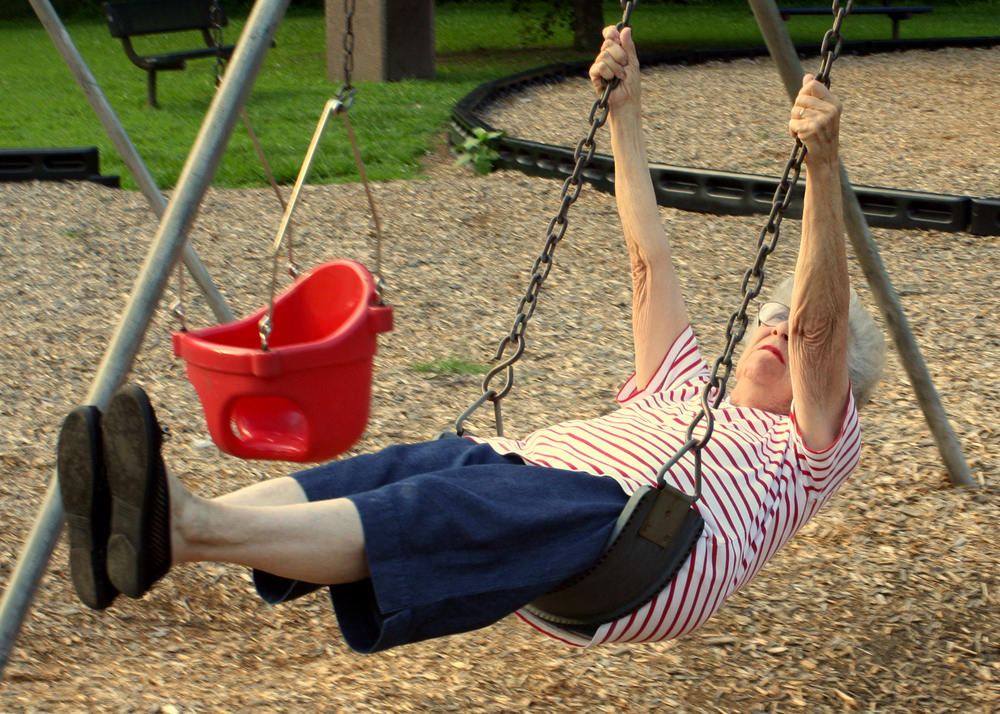It’s not uncommon to see children’s playgrounds sprinkled throughout neighborhoods. They provide a place for both parents and kids to get out of the house, play, exercise, and build community. Many cities are now expanding upon this concept and building playgrounds for senior citizens, hoping that it will benefit them both physically and socially.
The History Of Senior Citizen Playgrounds
The first playground for senior citizens was probably built in China in 1995. The country had passed a law that created a national physical fitness program focusing on older people. China evaluated its parks and decided to build playgrounds with equipment designed specifically for seniors. (1)
Many other countries followed suit after seeing China’s success with the playgrounds. Finland, Japan, Germany, Canada, England, and the United States all have senior citizen playgrounds too. They have really taken off in Spain, where 40% of the population will be 65 or older by 2050. Barcelona alone has more than 300 playground installations for seniors. (1, 2)
RELATED STORY:
Equipment In Playgrounds For Seniors
In a playground for senior citizens, you won’t see the usual children’s equipment, like monkey bars, sandboxes, and slides. Communities choose equipment for their senior citizen playgrounds with the needs of an older population in mind. The equipment promotes exercises for strength, flexibility, balance, coordination, and aerobic activity. It may include stationary bikes, treadmills, sit-up machines, and cross-trainers. Some playgrounds have hand-eye dexterity games, walking paths with ramps, or side-by-side striders. You may also find games like horseshoes, bocce, and ping pong. Since most playgrounds are outdoors, the equipment is designed to hold up to all types of weather. (1, 2)
RELATED STORY:
The Benefits Of Playgrounds For Older People
Seniors can benefit in many ways from playgrounds designed just for them. They provide a variety of exercises so that seniors can work toward specific goals and strengthen various muscle groups. Playgrounds encourage them to be active and prevent boredom because of the number of choices available. (1)
The equipment at senior playgrounds is designed to minimize the risks associated with an older population. Seniors can do exercises to help them with balance and coordination, which will help them avoid falls as they get older. They can also improve their manual dexterity and hand-eye coordination. (2)
Having access to free exercise equipment is a huge benefit because many senior citizens are on a fixed income and may not be able to pay for a gym membership. Because the playgrounds are free, seniors are less likely to overexert themselves because they’re trying to get their money’s worth at the gym. (1)
RELATED STORY:
Seniors can often feel isolated and lonely, especially if their spouse has passed on or their children have moved away. Playgrounds for seniors provide an opportunity to socialize and make friends with peers. Some equipment can be used by more than one person at once, which fosters a sense of teamwork. In this way, senior citizen playgrounds promote both physical and mental health. (1)
There have even been studies into the benefits of seniors using playgrounds. In 2004, a group of researchers from the University of Lapland in Finland studied elderly playground users. Their subjects were a group of 40 seniors between the ages of 65 and 81. The researchers found that after using a playground regularly for three months, the seniors showed improvements in balance, speed, and coordination. They also said that they enjoyed the social aspect of the playground and had fun meeting new people. (2, 3)
Kudos to the cities and countries that are recognizing and responding to the needs of their seniors. Physical and mental health remain just as important as we age. Playgrounds for seniors are a creative and effective response to this need.
*Article originally appeared at Healthy Holistic Living. Reposted with permission.












